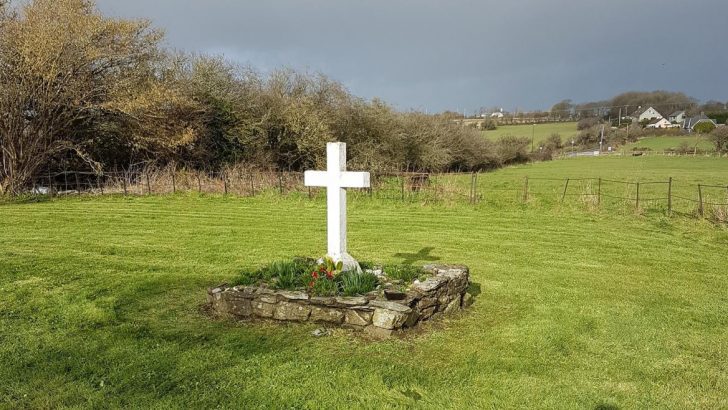The Great Famine in Kinsale
by Catherine Flanagan (Four Courts Press, €9.95)
Catherine Flanagan gives us an account of the Great Famine in Kinsale and its hinterland. At the outset she describes the social and economic conditions in the area before the famine. The lower classes – cottiers and labourers – made up 80% of the local population. For their food they depended almost entirely on the potato crop. Hence when it failed there was a critical shortage of food.
Most of those who died during the great Famine were struck down by diseases caused by starvation”
Next Flanagan examines the responses of the authorities to the impending crisis. Prime Minister Peel arranged for the secret importation of £100,000 worth of maize from America, to be stored in depots around the country. He also gave a grant to the Board of Public Works for employment on works of utility.
After a delay arising from problems at the local level, the ‘yellow meal’ was distributed successfully in the Kinsale area from five sub-depots. However, owing to local opposition, the public works intended to provide employment in Kinsale district were not very effective. Much more effective was the government’s provision of relief to the poor in the form of bread and soup. To this end a Kinsale relief committee set up a bakery which supplied 1,720 inhabitants with bread and soup.
A workhouse to provide for the most destitute people had been established in Kinsale in 1842. Built to accommodate 500, it opened with 679 inmates. By 1845 it had over 2,000. Later numbers fluctuated, but it was always operating at well over capacity. The rules were harsh, the fare was spartan, and the death rate was alarmingly high. People dreaded ending up within its walls.
Flanagan discusses the relief provided by non-governmental organisations, such as the Sisters of Mercy in Kinsale. Twice daily they provided food to the famine-stricken children. In addition a large number of people also benefitted from the distribution of soup by the nuns. A Kinsale Ladies’ Committee also distributed soup each day.
The Quakers were at the forefront in establishing local soup kitchens and they also provided donations to the relief committees in the area. Major Deeds and the other officers stationed at Charles Fort outside the town opened a daily soup kitchen.
Most of those who died during the great Famine were struck down by diseases caused by starvation. Generically described as the ‘famine fever’, the term referred to two types of fever, typhus and relapsing fever. The upper classes were more susceptible to the former, the lower classes to the later.
To compound the tragic situation cholera arrived in Kinsale in the summer of 1849. The scale of the outbreak overwhelmed the local medical officers and attendants. Quickly the fear of dying from cholera was parallel to the fear of dying in the workhouse. Also in 1849 a hospital for fever patients was set up in Kinsale. It had accommodation for just 30 patients. Operational in 1849 and 1850, nearly half its inmates were 15 years of age or less and their stay averaged only three weeks.
In Kinsale the most vulnerable classes in pre-famine society were the greatest victims of the epic tragedy”
Despite all the relief efforts between 1847 and 1851, the population of Kinsale and its hinterland declined from 41,014 to 30,051 or by 27%. This demographic change was caused by emigration and the deaths arising from the Great Famine. In Kinsale as elsewhere the most vulnerable classes in pre-famine society were the greatest victims of the epic tragedy.
The genocidal military campaign conducted in Ireland by Cromwell and the devastation caused by the Great Famine have framed Irish attitudes to England for many years. In this study Catherine Flanagan provides an accurate and balanced contextualisation of the Great Famine.
This and other such publications cannot but prompt a more mature understanding of the history we share with our neighbours on the other island.


 The graveyard at Kinsale Union workhouse
The graveyard at Kinsale Union workhouse 